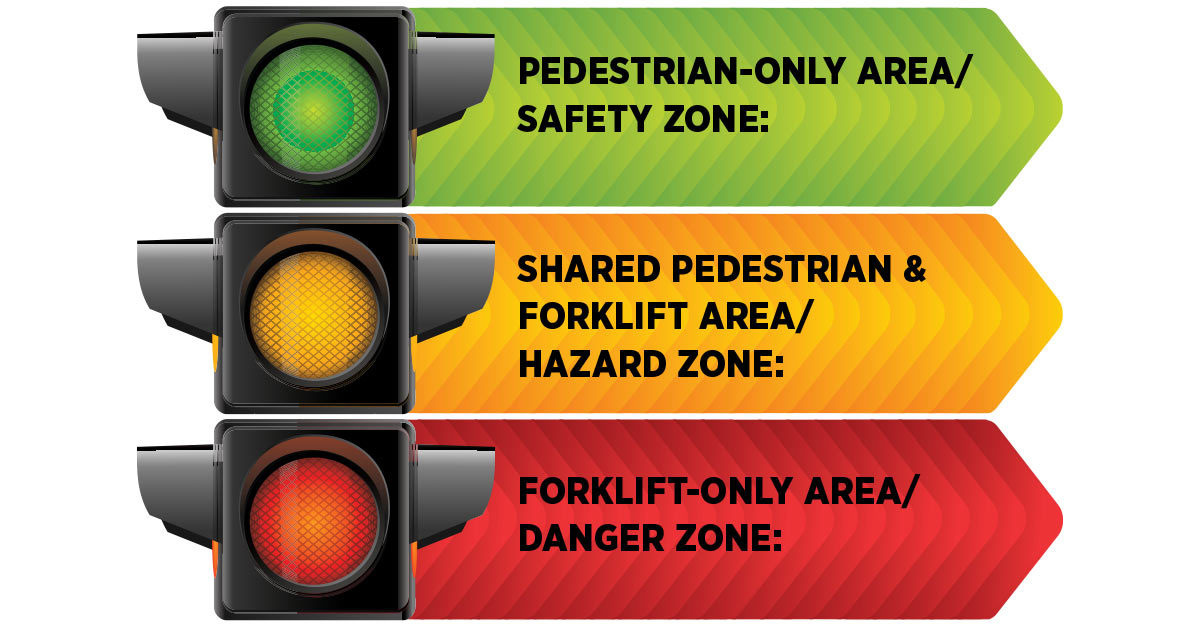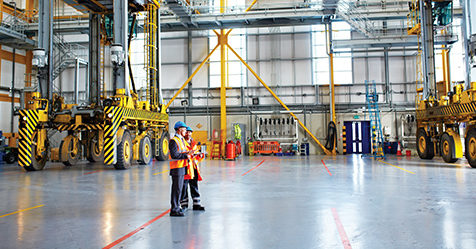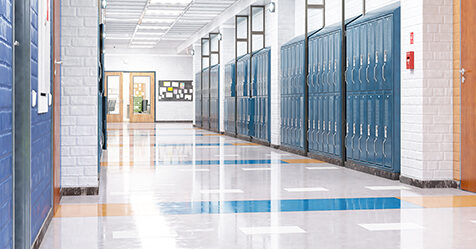Building service contractors (BSCs) looking for growth opportunities may see more warehouses or manufacturing plants in their future. According to CMM’s 2018 BSC/Contract Cleaning Benchmarking Survey, 13 percent of contract cleaners said they plan to target the industrial market for new revenue. If this statistic applies to your operation, it’s important to make sure your staff has the proper training to clean this type of facility and the site has the appropriate safety measures in place.
In order to manage plant and warehouse traffic between pedestrians and forklifts, facilities will likely have a number of protocols in place to minimize the risk of accidents—one of which may be color-coded safety zones. It’s important that cleaning crews are trained on the different measures they need to take when entering these areas. A good practice is to always keep a safe distance of 10 feet between staff and moving equipment. In all zones, cleaning crews should know to follow the pathways clearly defined with painted lines on the floor.
Green: Pedestrian-Only Area/Safety Zone
While a green zone is typically a forklift-free zone, there are occasions when they need to enter to fix a machine or move materials. If a cleaner is working alone in this situation, he or she should ask someone to guide the forklift operator through the zone and away from the area undergoing cleaning. If the cleaner is working in a team, one person can continue cleaning while the other becomes a watch person.
Yellow: Shared Pedestrian & Forklift Area/Hazard Zone
Cleaners and forklifts should not coexist in areas without the necessary precautions in place. Wearing a high-visibility vest is suggested. If a cleaner is in a yellow zone and a forklift needs to enter, a mutual exclusion rule should apply. The cleaner should leave the area while the forklift passes through, or the facility should have a 10-foot perimeter from which the forklift operator maintains distance.
Red: Forklift-Only Area/Danger Zone
If cleaning staff need to enter a red zone, they should announce themselves to the other employees on the floor, wear a high visibility vest, and block off any areas that they have to clean with caution tape, so machine operators know to keep a distance. Facility managers may choose to install protective barriers to physically separate pedestrians from forklifts and machinery.




